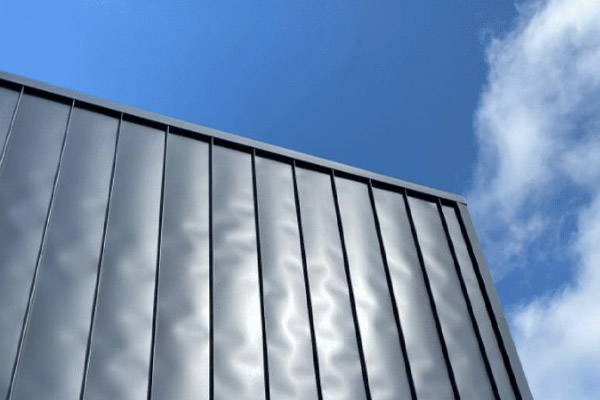Aesthetic Challenges vs. Structural Integrity
Introduction
Metal roofing has become a popular choice for residential and commercial buildings due to its durability, longevity, and sleek aesthetic appeal. However, one common phenomenon that architects, builders, and homeowners may encounter with metal roofing is oil canning. This inherent characteristic, often observed as waviness or distortion in flat surfaces, has raised questions about its impact on both aesthetics and structural performance. In this blog post, we will explore what oil canning is, its causes, and how industry experts address this concern.
Defining Oil Canning
According to Metalcraft, oil canning is an inherent characteristic of gauge cold-formed metal products, particularly those with broad flat areas like Espan®. It manifests as visible waviness or distortion in the flat surfaces of metal roofing and wall cladding. However, the key point emphasized by experts from various sources is that it does not compromise the strength or performance of the metal products.
Causes of Oil Canning
Oil canning can occur during both the roll-forming process and installation of metal roofing. Additionally, thermal expansion during the life cycle of the roof sheeting can contribute to the development or exacerbation of oil canning. This phenomenon is more pronounced in products with standing seams or wider profile patterns such as the Legacy™, as highlighted in the Metal Roof and Wall Cladding Code of Practice from New Zealand Metal Roof Manufacturers Association.
Expert Insights and Recommendations
Different industry players offer insights into managing and mitigating the effects of oil canning. Dimond Roofing suggests that the use of vented roof underlay, such as Tyvek Metal, can reduce it in tray-type profiles like Heritage Tray. Other options include increasing the material thickness, incorporating stiffening swages in wide flat elements, and limiting flat elements to less than 150mm width. It’s essential to refer to the New Zealand Metal Roof and Wall Cladding Code of Practice for comprehensive guidelines.
Steel and Tube and Roofing Industries echo the sentiment that oil canning is an architectural feature that does not compromise the strength or performance of metal cladding. They stress that this phenomenon is more of an aesthetic concern and provide reassurance to property owners, builders, and specifiers about the overall integrity of the roofing material.
The Role of Weathering and Innovation
Both Metalcraft and Roofing Industries highlight that oil canning becomes less apparent with weathering. The Steel and Tube source also emphasizes that the undulations in metal cladding may be viewed as a feature rather than a defect. Furthermore, innovative swaging systems, such as those used in Eurostyle™ roofing, are available to assist in reducing surface imperfections.
Conclusion
In conclusion, oil canning is a natural characteristic of metal roofing that may impact the aesthetic outcome but does not compromise the structural integrity or performance of the product. Industry experts provide valuable insights and recommendations for minimizing the visual impact of oil canning. By understanding the nature of oil canning and following best practices outlined in industry guidelines, architects, builders, and homeowners can make informed decisions and appreciate the long-term benefits of metal roofing.
Frontier Waterproofing are specialists in installing tray roofing, and our skilled tradesmen can help get the best results in the appearance of your tray roofing. If you have a project you would like our expertise on, reach out to us here.

